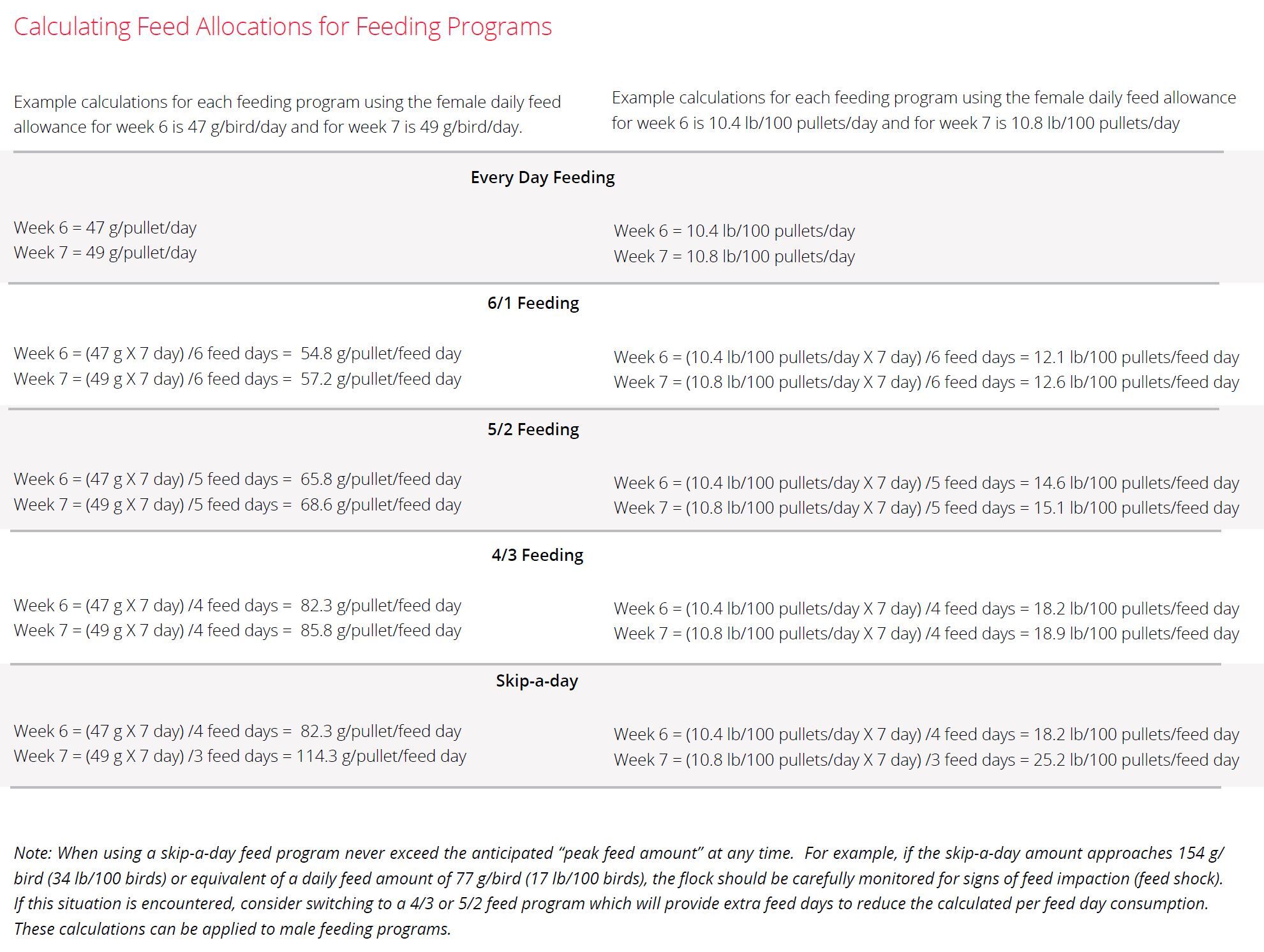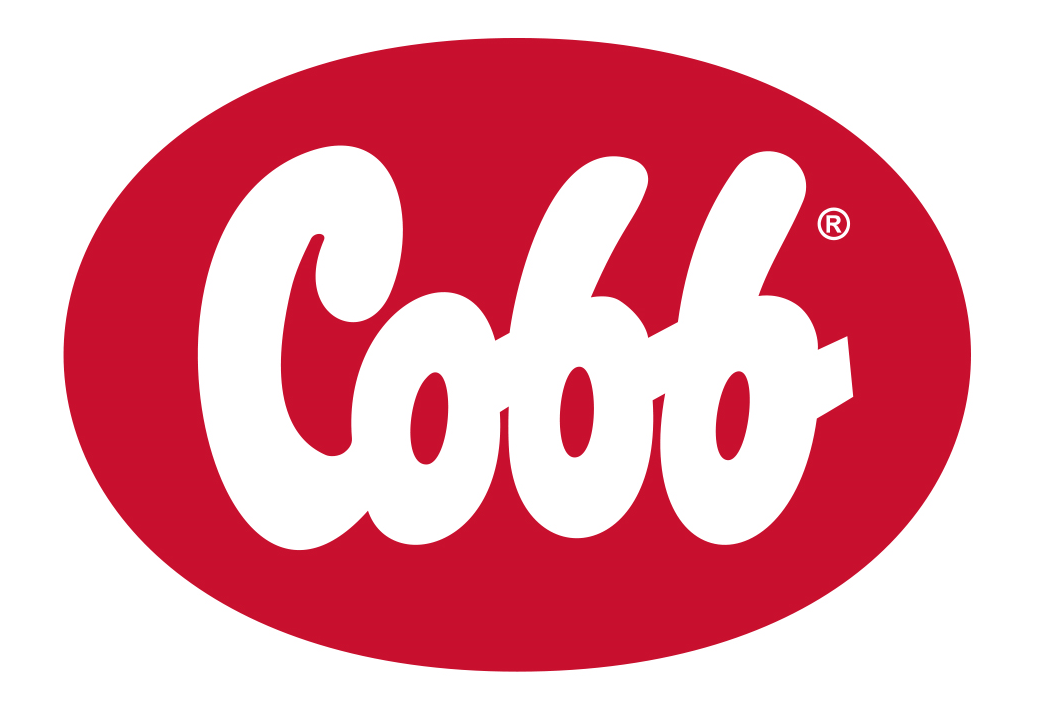



Cobb Breeder Management Guide: Phase 2 - Rearing: 4 to 8 weeks
Learn more about feeding methods for optimal rearing managementPart of Series:
< Previous Article in Series Next Article in Series >
Editor's note: This article is an excerpt from the Cobb Breeder Management Guide and additional articles will follow. The Guide was designed to highlight critical factors that are most likely to influence flock performance. The management recommendations discussed were developed specifically for Cobb products. The recommendations are intended as a reference and supplement to your own flock management skills so that you can apply your knowledge and judgement to obtain consistently good results with the Cobb family of products. To read or download the complete Guide or to view Cobb's other management guides, click here.
The brooding phase is focused on getting the chicks started and adapting them to controlled feeding. In the maintenance phase, the primary objectives are weight and fleshing control. It is important throughout this phase to regularly handle the birds to evaluate their fleshing scores. By handling the birds regularly and at different ages, their development and body condition will be better understood. Bird condition at photo stimulation is critical. The only way to achieve the desired bird condition is with correct weight control and regular evaluation of body condition or fleshing. The support systems continue to develop and it is important to not fall below bodyweight standard for extended periods of time.
If the males do not achieve target bodyweight during the first 4 weeks, a slight increase in feed amount is recommended. Alternatively, light hours can be increased to allow the males to consume any remaining feed in the feeding system.
Feeding methods for optimal rearing management
Feed allocation programs are used during the rearing phase to help control the growth, weight gain, and maturation of breeding flocks. Be aware of any national legislation that must be considered when designing and implementing a feeding program for the rearing period. Feed allocation may consist of daily feeding (with restricted amounts per bird per day) or alternate day feeding (with larger amounts per bird on days when feed is provided). The following are examples of feeding programs:

Every Day - Birds are fed every day.
5/2 - Birds are fed 3 consecutive days followed by 1 day off; then 2 days of feeding followed by 1 day off to complete the 7-day cycle. Note: This is the most common feeding program globally.
4/3- Birds are fed 4 non-consecutive days per week and off-feed for 3 non-consecutive days (see chart to left).
Skip-a-day - Birds are fed every other day.
6/1 - 6 days with feed and 1 day off.
Breeder Feeding Programs
Every day feeding
In some countries the local welfare conditions require the birds to be fed daily. This feeding method provides a daily allocation designed to manage growth, sexual maturity and into production.
Benefits
- Normalized feeding pattern and better FCR (better feed absorption in the intestinal tract).
- Calm flock with normal behavior and few enteric challenges.
- Diluted feed allows increased daily feed allocation and therefore improved feed distribution. With dilution, the feed increases are around +3 g /female/week between 5 to 13 weeks of age, and this keeps the flock growing more controlled and prevents “frog feeding” (changing of weekly feed amounts up and down based on bodyweight fluctuations).
- More easily done when mash feeds are being used that take more time to be consumed.
- Caretakers interact with the flocks daily as part of the normal feeding schedule.
Challenges
- Feed distribution needs to be ideal and feed needs to go around completely to guarantee enough feeder space per bird.
- Dilution of the feed is necessary for feed distribution, which increases the total feed used in rearing and feed cost (more milling, transport and storage).
- Uniformity is often more difficult to maintain, especially after 12 weeks of age due to very fast feed cleanup times.
- Birds have smaller crops and gizzards because of reduced feed amounts as compared to other feeding programs.
- Personnel must be present at specific times to check feed and water availability.
- On days of individual bird vaccinations feed is delivered later than the scheduled time. Vaccination crews need to finish by noon or early afternoon to give enough time afterwards for feeding and water intake. The light program may need to be extended on vaccination days.
6/1 program
This feeding program is typically used as a bridge or intermediate step to progress to a 5/2 or skip-a-day program. Similarly, it can be used to return to daily feeding at the end of the rearing period. This program is usually introduced in the 3rd week for 1 week prior to the 5/2 or skip-a-day program. Likewise, the 6/1 program is also used at the end of rearing (18 to 20 weeks) for a 1 to 2 week period depending on how fast birds consume the feed and if there are feed distribution issues.
5/2 program
This is the most commonly used program in rearing worldwide and serves as a compromise between daily feeding and skip-a-day feeding. It is used primarily to maintain or enhance good feed distribution and uniformity. Typically, this program is used during the late part of the growing period, particularly if “feed impaction” (choking) is an issue on feed days when the 4/3 or skip-a-day feeding program is used.
Benefits
- Birds are fed on the same days each week throughout the rearing period.
- This program increases the feed amounts presented to the birds on feeding day compared to a 6/1 or everyday feeding program.
- Good feed distribution over the whole house area with pans and chains.
- May be implemented at 3 to 4 weeks of age and continued until 16 weeks of age.
- Can be extended to 1st egg when feed amounts are small (for example 100g per pullet at start of production).
- Used with medium to high energy feeds that are fed at lower feed amounts.
- Can use the non-feeding days to apply vaccinations and “off” feed days can fall on Sunday to create a day with reduced labor.
Challenges
- Visits should be minimized on non-feeding days and only essential staff should conduct checks. Visiting the flock on non-feeding days can make the flock agitated.
- Visits should be done on non-feeding days only if vaccinations are done.
- Feeding program is not consistent during the week since there will be a period of 3 ‘on-feed’ days followed by an off-feed day and then 2 ‘on-feed’ days followed by an off-feed day.
- Flocks display more stress related behaviors on the non-feeding days
4/3 program and Skip-a-day
These programs are preferred when feeding low volumes of a high-density feed (>2900 kcal/kg; (12.08 Mj/kg)), or when feeding space is limited. It ensures a longer feed period and allows timid birds to receive enough feed. From 21 or 28 days to 140 days, the equivalent of 2 days feed is given on a single day, with only a scratch feed provided the next day. If low feed amounts can be given then it is basically an on and off day feeding. This means that with skip-a-day the feed amount will double (100 % more) on feeding day. With the 4/3 program the feed amount is increased by 75 % on a feeding day. This program is used when feed presentation is a pellet or crumble.
Benefits
- Improves uniformity as a larger feed amount is being distributed over the entire house.
- More common where there is a shortage of feeder space.
- Feed mill can produce less feed and less feed is being transported to the farms reducing transport costs.
- Feed mill has more capacity to cover all the farms (If the feed mill is at full capacity it becomes the bottleneck in the integration).
- Crops and gizzards are larger for birds trained to consume larger amounts of feed. This means that feed cleanup time in production is also faster. This can be an advantage with hot weather conditions.
Challenges
- Flocks display more stress related behaviors on the non-feeding days.
- Cannot feed more on a feeding day than is being fed in peak production (for example 165 g in peak production means with skip-a-day a feed amount of 82.5 g per day). That amount is being fed at around 19 to 20 weeks of age. At that time frame a change must be done to 4/3 or 5/2 program for a few weeks and then change to daily feeding.
- Over consumption is a risk for the flock if the feed amount on a feeding day is too high leading to overeating, pendulous crops and even death. If feed shock occurs, change the feeding program to 5/2 program.

Breeder feeding programs case study
Issue:
There is a significant drop in feed cleanup time when using an everyday feeding program. Rapid feed cleanup times will hurt uniformity and make the birds more nervous since the more timid birds may not be able to eat or may not have much to eat. A crop check immediately after feed cleanup will indicate if there is a feed intake uniformity issue. A maximum of 2 % of the birds should have a small amount of feed in the crop.
Solution:
Introduce a 6/1 program for 1 week and at 4 weeks (28 days), introduce a 5/2 program until 18 to 19 weeks. After 19 weeks, return to daily feeding. It is possible to continue with a 5/2 or 6/1 feeding program until the week of photo stimulation when feed amounts are very low or the birds are fed pelleted rations with feed cleanup times of less than 30 minutes.
Transitioning from daily feeding to an alternative feeding program normally starts when the feed cleanup time is less than 4 hours, typically between 14 to 18 days of age or into the third week. When shifting between alternative feeding programs, for example, shifting from 4/3 to 5/2, it is important to observe bird behavior and health. A shift from a lower feed amount to a higher feed amount on feed day can lead to impaction. Providing the flock with an opportunity to drink 30 to 40 minutes before feeding can add moisture to consumed feed. If impacted crops are noticed, crop checks after feeding can help the farm team members understand the bird’s condition after eating.













